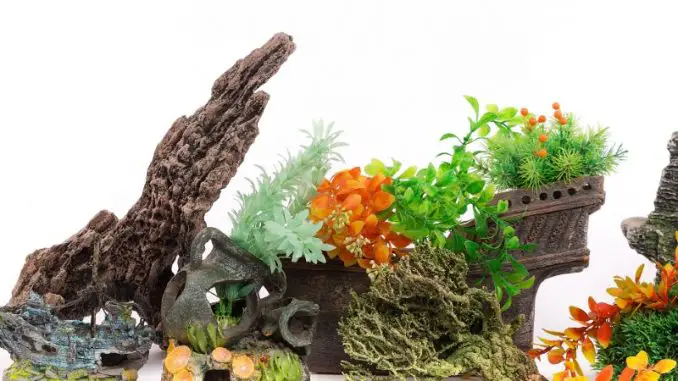
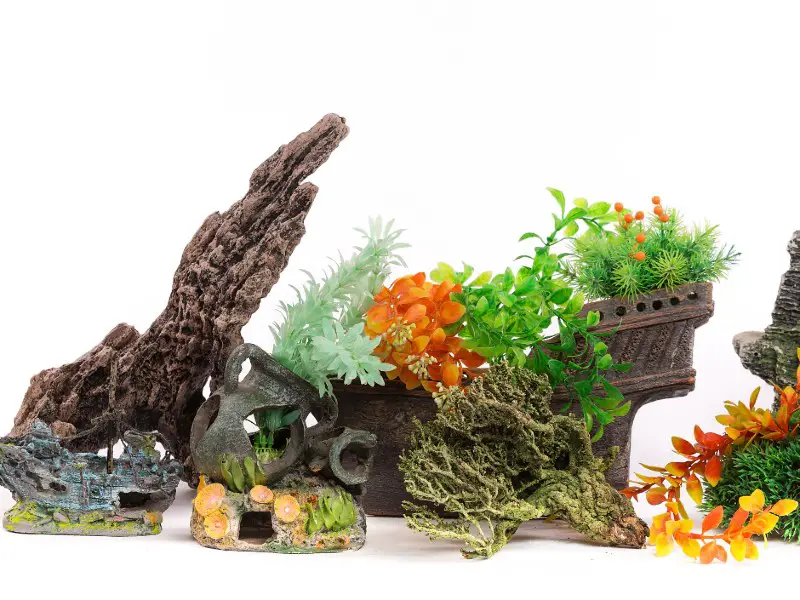
Designing an aquarium is arguably the best part of fishkeeping.
Once you have decided on your fish, you then need to create the perfect environment for them. Your choice of decorations will change the whole appearance of your tank.
Of course, your fish will make the best decorations, but they might not be out and about all of the time.
Most people will head to their local fish store to buy decorations, but you could make some instead.
There are lots of advantages to doing this. It can be cheaper, more convenient, and much more fun to come up with creative alternatives to commercial products.
We will talk you through some inventive ways to create some DIY aquarium decorations. You don’t have to be amazing at crafts to add your own personal touch to your aquarium, there are ideas here to suit everyone.
DIY Decorations
You will have an endless amount of options for decorations if you look beyond your local fish store for ideas, and you’ll be able to create a much more unique and personal design.
You might have some suitable decorations around your house; maybe you could buy some from elsewhere, or perhaps you could make your own.
Here are a few “Do-It-Yourself” ways to decorate your aquarium.
Household Objects
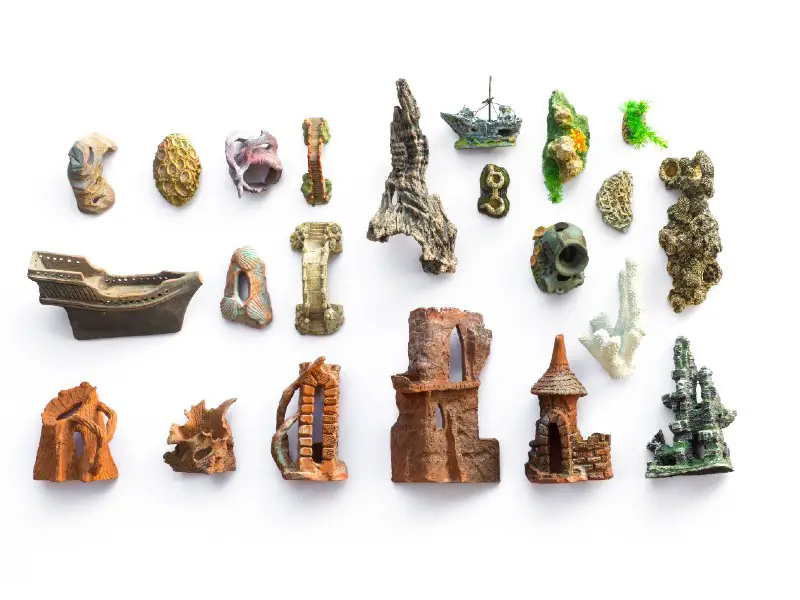
You probably have lots of items around your house already that can be used as decorations. If they are suitable, it can be as simple as placing them straight into your tank.
It is worth at least giving them a rinse first though, to remove any dust/particles.
You need to be sure that the materials won’t release any pollutants into your aquarium water.
Plastics are usually fine, which is why toys are popular decorations. Plastic army men, dinosaurs, or action figures can be arranged to make a fun and engaging scene in your tank. This is a great way to add a personal touch to your design.
If you have kids, you will likely have lots of toys laying around to use. Your kids will enjoy aquascaping your aquarium with them too.
Look out for toxic paints on toys, such as figurines you have painted yourself. You can purchase aquarium-safe paints to seal the decoration and protect your fish.
Flowerpots and vases make excellent additions to an aquarium because they create caves for your fish. Bottom-dwellers will appreciate these in particular, acting as a territory to retreat to when hiding from bright lights or boisterous tank mates.
Ceramic mugs can be used in the same way. You can purchase these in various different fun designs.
Be careful that there aren’t any sharp edges on your household objects. These could easily injure a fragile fish as it swims past.
Hardware Store
If you don’t have many options at home, a great place to look for DIY decorations is your local hardware store or garden center.
Lawn ornaments will work well. These come in all shapes and sizes. Garden gnomes or stone animals look good when sitting underwater.
These are good places to buy some flower pots or vases if you don’t have any spare around the house. You could even get some fake plants.
PVP piping is another fun (and safe) option. These tunnels will work well as hiding spots; you could try attaching a few together to make a whole underwater maze.
Again, make sure that anything you are adding to the aquarium is safe and will not release any pollutants when left in water for extended periods of time. Metals will rust and corrode.
Legos
Most people would agree that Legos are incredibly fun, no matter your age. You can let your imagination run wild and build whatever takes your fancy.
Legos are perfectly safe in the water, which means you can let your creativity free when designing your aquarium interior.
They usually come in an official set, where you follow instructions to build a set design. You could do this and add the completed structure to your tank.
Another option is to gather a random selection of pieces and build something original.
A good thing about Legos is that you can take them apart and rebuild them as much as you want, so your design can keep changing.
When adding Legos to your aquarium, remove all the air bubbles because the pieces are light and float. This shouldn’t be a problem with larger structures.
You can try using larger building blocks instead of Legos, but it may be safer to glue them together (with an aquarium-safe glue) if they do not have interlocking parts.
Make Your Own
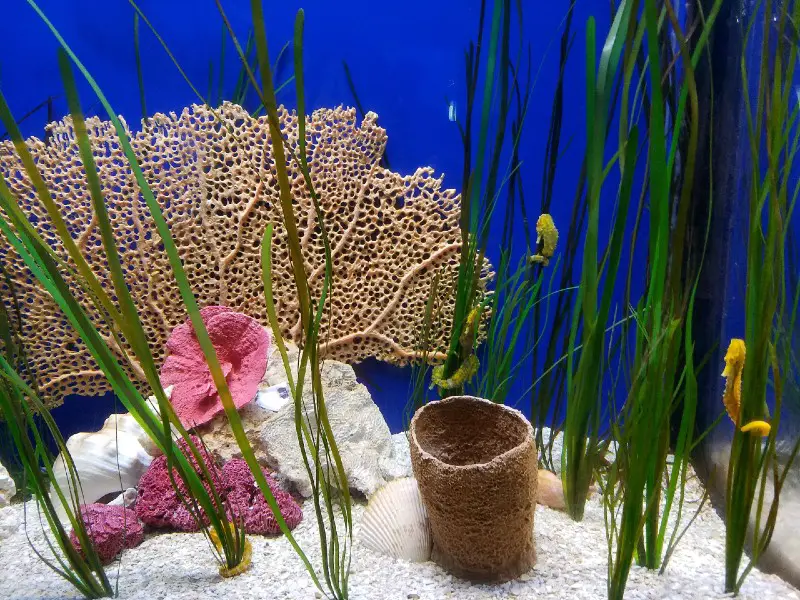
If you like the look of some commercial ornaments but don’t have the money to spend on them, you could make your own from scratch.
Go to the craft store and you will find a wide range of different materials that you can use to make a decoration yourself. This is the true DIY method.
You can design the decoration however you want, but you must be careful when picking materials.
Firstly, the materials must be non-toxic; they cannot leach any chemicals into the water. You can buy aquarium-safe glues and paints.
Secondly, not all materials are suitable for all animals, so do your research to check that all your pets will be safe.
A useful material is silicone. You can mold this into any shape you want, potentially making an entire landscape for your setup. Silicone will need insulating to make it safe for your aquarium.
Building decorations from scratch isn’t for everyone. Some people don’t have enough time, others don’t think they could do a good enough job.
A Natural Aesthetic
When designing an aquarium, many people go for a natural look. This makes sense, as it would resemble the natural habitat of your pets, which is ultimately the best thing you can do for your fish.
To do this, aquarists usually go to a pet store to purchase rocks and wood, which seems strange when you think about it. Why buy pieces of nature when it’s all around you?
You don’t have to. You can go outside to search for things like rocks, shells, and wood.
These will have to be made safe before you add them to your setup by thoroughly cleaning them. This means scrubbing them to remove dirt, as well as boiling them to kill any harmful bacteria or creatures.
Some materials should not be used as aquarium decorations. For example, certain rocks could affect pH or release chemicals/dissolved solids, depending on what they are made of.
You will have to do some research and be confident that you know what you are actually adding to your water.
Wood can cause problems too. Not all wood is suitable since most will be prone to rot when left in water. If the wood has previously been used for an artificial purpose, then it may have been treated with chemicals.
You could turn the wood you find into driftwood to make it safe. This can take time, but it is a rewarding process.
Holiday Themes
As long as all the decorations are aquarium safe, you can easily swap decorations to match holiday themes. Your fish might want to celebrate as well!
This might mean adding some plastic spiders and skulls for Halloween, or switching these out for reindeer and a snowman when Christmas arrives.
Perhaps if you have some Legos you could keep rebuilding decorations through the year to suit the occasion.
Be careful if you are moving decorations regularly. Check that a fish isn’t hiding in/around a decoration.
Bear in mind that a change of decorations could affect water conditions and the water level too.
Other Ideas
Decorating your aquarium doesn’t have to be limited to the items you place inside, there are lots you can do to the exterior as well.
You have a lot more freedom when decorating the outside since you don’t need to worry about contaminating the water or harming your fish. It’s much easier to change your mind and switch things up too.
Below are a few inventive ideas to brighten up the outside of your tank.
Background
Adding a background to an aquarium is a simple way to add lots of colors. They are particularly effective if you can see them all the way through your tank.
It’s as simple as sticking something colorful to the back of your tank; it could be an image of an authentic aquarium scene, or it could just be something bright and cheerful.
You will notice that some are sold commercially at pet stores, but you might already have some other options in your house.
Most people have wrapping paper at home. If not, you can buy some very cheaply. Wrapping paper comes in all sorts of colors and patterns, so your background could be anything you want it to be.
If you are a particularly artistic person, perhaps you could design your own background. You might be able to draw or paint something to attach to the back of the tank.
If art wasn’t your best subject at school, you could print off an image you like online.
Markers/Paints
A fun and inventive way to decorate your tank is to turn it into a canvas.
Pick up a permanent marker and start doodling on the glass. You can draw anything that your imagination conjures up, using a whole rainbow of colors if you want.
If you’re good at art, that’s great, but you don’t even need any drawing skills, as you can simply clean it off and draw something else whenever you want.
This is an exciting way for kids of all ages to get involved with designing the aquarium, though it is fun for adults as well!
If you prefer using paint, then that is fine too. It will create a completely different look.
You can even paint inside the tank, but only if you are using special paints. They will need to be non-toxic and safe for underwater use.
If you’re adding any decorations to your aquarium that have previously been painted (like mini figurines), you will need to seal the paint with an aquarium-safe layer.
Decals
A quicker way to add some designs to the front and sides of your fish tank is to use some decals/vinyl stickers.
They will stick well to the outside of the glass. Don’t bother trying to add them inside, they won’t stay in place and could release some harmful chemicals into the water.
There are decals to suit every design. Subtle options include rocks, trees, and plants, but you could use images of your favorite film/TV characters instead.
You could even add fish decals as extra tank mates for your pets.
If you change your mind later on, you should be able to remove the decals again. Sometimes this can be quite tough and time-consuming, so consider this in the design phase.
Decals make a great foreground and are very useful for adding a sense of dimension to your setup.
Lighting
Store-bought aquariums will come with lights most of the time. They will be standard white lights that get the job done.
You could swap these for something a bit different, like colored bulbs.
Alternatively, run some holiday lights around the outside of the tank. This would let you mix lots of different colored lights quite easily.
Do not use any aggressive flashing settings on this style of light.
Lighting is important to fish; the wrong intensity could make them very stressed. It is even more important for corals and plants, which need light for photosynthesis.
Research the lighting requirements of everything in your tank thoroughly before changing anything.
Tanks
Another feature you can get inventive with is your actual tank itself. Virtually everyone has a regular rectangular glass tank from a pet store, but you could switch it up.
Maybe you could try a large mason jar or water bottle.
Whatever you pick needs to be big enough to accommodate your fish and equipment, and it should be very easy to access the inside for cleaning.
Some people have gotten even more inventive with what they use as a fish tank. A quick image search online will show you people who have repurposed old household objects into aquariums, such as TVs or washing machines.
It requires a lot of time and skill to be able to convert things like those into a fish tank, so it may be easier to buy one that somebody else has already made. It will cost much more than a regular tank though.
Things to Consider
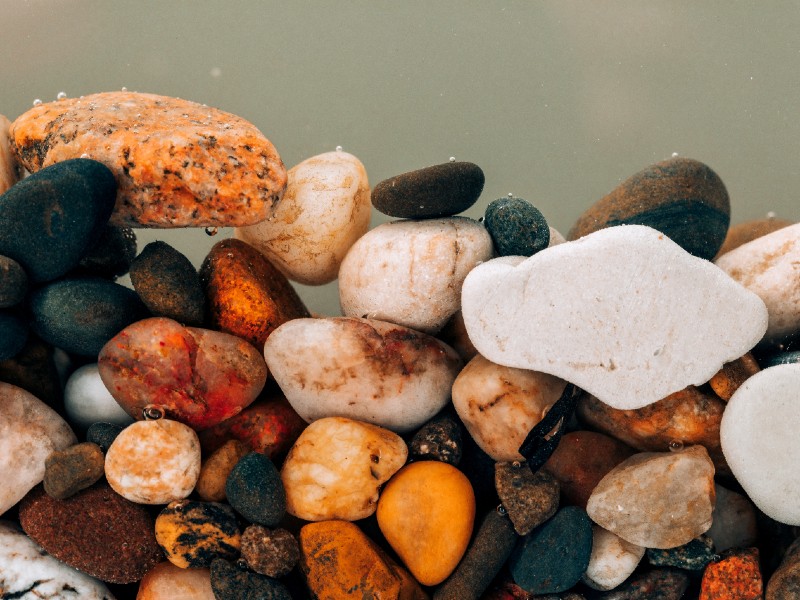
You can’t just add anything to your aquarium, you must think carefully about whether it will be safe for your fish.
You will need to consider things like what a potential decoration is made of and where it has been before your aquarium.
If you can find specific information about the item from the manufacturer, you can be more confident when adding it to your tank. You might be able to find what you need to know with a quick search online.
Ultimately, the safety of your fish is the most important thing, so always err on the side of caution.
Contamination
A key part of owning a healthy aquarium is maintaining the perfect water conditions. You don’t want to add anything to your tank that will make this harder.
If water conditions worsen due to leaching pollutants, your tank could become the perfect breeding ground for diseases, helping pathogens to spread if they enter your tank.
Most chemicals that get into the water would be toxic for your pets. One example is copper, which is toxic to invertebrates.
Copper is commonly found in aquarium medications, so you must be careful when adding things specifically designed for an aquarium too. Check labels.
DIY decorations could contaminate your water in many ways. Toxic paints are a common problem. Paints can slowly leach into the water without you even noticing until your fish become ill.
You should be able to find aquarium-safe paints that form an effective seal around your decorations. Use these if you are worried about leaching paints.
These paints will definitely be needed on anything you have previously painted yourself, such as figurines.
Avoid metals that may rust and corrode when left in water.
Chemicals can be introduced from wood that you collect for your tank. If you scavenge wood that has previously been used for an industrial purpose, it will likely have been treated with chemicals.
Wood can also release tannins. These will discolor your water and destabilize the pH. Some people like this effect, as it recreates a blackwater habitat.
If you don’t want this effect, there are a few ways to remove tannins before you add the wood to your tank, such as by boiling it.
If you’re adding rocks, research what they are made of. Some materials will begin to dissolve particulate solids into your water. This could harm your fish and/or turn your water cloudy.
If you collect anything from outside, it is very useful to know as much as you can about it, such as where it originated.
Shapes
Decorations that have been designed specifically for an aquarium will be smooth without any sharp edges.
This is important because it would be very easy for a fish to cut themselves, especially if they spend a lot of their time swimming close to surfaces while scavenging for food.
This is why many people choose to use soft, fine-grained sand as a substrate, to protect the sensitive barbels of their bottom-dwelling fish.
Physical injuries could lead to further issues for your fish, such as disease.
If you are adding items that haven’t been designed for aquarium use (e.g. a broken flower pot), check that they won’t leave your fish at risk. Run your hands over the decoration to feel for any sharp edges.
You could always sand edges down or position the decoration so that your fish can’t get near the sharp bits.
If neither of these is an option, then you’ll have to pick something else to add to your tank instead.
Another thing to consider is how stable a decoration is. You don’t want it to collapse and crush an unexpecting fish.
If you are piling decorations up (perhaps to make a rocky structure), try using aquarium-safe glue to hold everything together. Decide on how you want it all to look first though.
Burying an unbalanced decoration into the substrate slightly will help to hold it in place.
Similarly, a slight burial can stop small/light decorations from floating. Try to remove all air pockets to saturate the decoration with water.
Substrates
The substrate is where most of the beneficial bacteria in your aquarium will grow. These are responsible for breaking down harmful chemicals in the water before they can harm your fish.
Beneficial bacteria are crucial for a functioning environment, so try not to be too exotic with your substrate choice in case you are putting your bacteria populations at risk.
Your substrate should have a high surface area, sands and fine-grained gravels are best.
If you want something a bit brighter and more interesting, you can purchase colored substrates from stores.
Summary
There are lots of ways that you can decorate your aquarium without heading to your local fish store.
Some methods require a bit more time and skill than others, but there are options here that everyone can try.
You need to make sure that anything you add to your tank will be safe for your pets. There are often ways to make decorations suitable for a fish tank, but if not, there will be many other items that you can use instead.
Decorating an aquarium is always a fun project, but by using some DIY decorations, you can get creative and make something truly unique and personal. You might even save some money in the process.
What DIY aquarium decorations have you made? Let us know your ideas in the comments below…


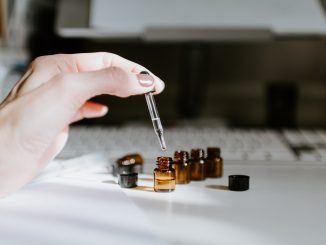
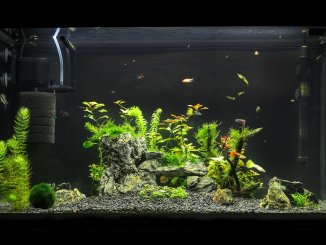
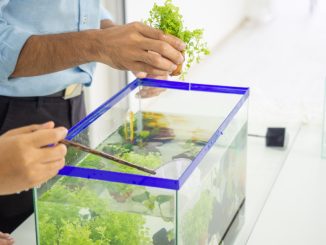
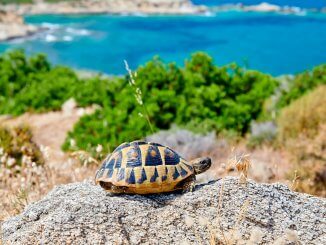
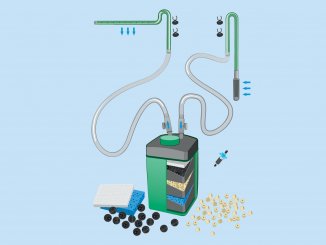
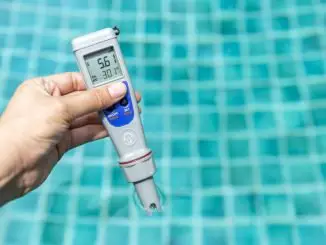
It would be nice if you recommend a clear coat of some kind to cover decorations so they don’t bleech and fade. Safe for fish and shrimp
I have several tank ornaments that have faded. What brand of paint should I use to repaint. And I want to seal it afterwards. What is safe for fish and shrimp?